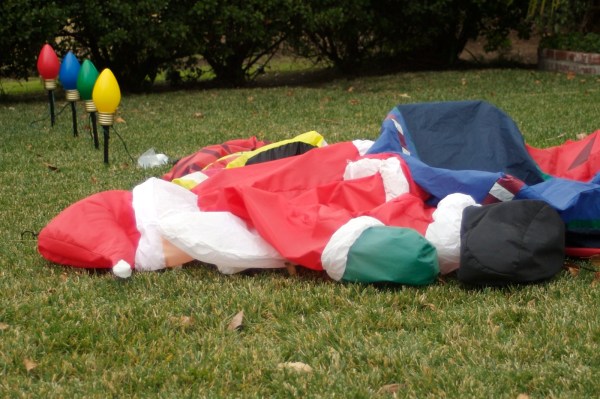It’s the final week of the Christmas season, and the holiday shopping advertisements are flowing through my inbox faster than startup pitches. While endorsements from celebrities occasionally show up, there is one uber-influencer that seems to appear more than any other. Jolly St. Nick, the rotund and red-clothed Santa character partially popularized by Coca-Cola, has traditionally been the endorsement of choice for marketing executives in the month of December.
But if Mavrck, Pixlee, and other startups have their way, that omnipresent santa will be replaced by your colleague or your next door neighbor – and maybe even by you.
I have written a lot about the opening up of labor markets through algorithms and democratized finance, but one activity that has ironically resisted this movement has been marketing. There has always been a tension in advertising between showing the ideal and the ordinary. Just think of celebrities in make-up commercials versus everyday people advocating for medical treatments. We simultaneously want what others like us have, but we also have dreams and look up to the stars in our lives for inspiration.
All that is changing, and with it, the rules for how to succeed in marketing.
Mavrck, a TechStars Boston graduate, is hoping to democratize influence by building a community platform for brands to engage with what the company calls long-tail influencers. At the heart of this platform is reciprocity, what Robert Cialdini, author of Influence, called one of the most fundamental laws of social relations. The idea is to find those visible, yet hidden micro-celebrities – your aunt who is an expert at shoes or your desk mate who loves chocolate – and provide them with a premium experience from a brand through its platform. Last week, the startup picked up $2.5 million in Series A financing from GrandBanks Capital.
The company has already seen some key results from early trials. Unilever used the platform for their Clear Shampoo and Conditioner product through its Seven Day Clear Challenge. Using Mavrck, the consumer goods company provided 1000 influencers with a unique link that they could share with friends and family. The company got 15,000 email signups, and most importantly, more than 3,500 purchases from these links within thirty days according to the platform’s data.
For Lyle Stevens, the co-founder and CEO, the emphasis on democratized influence isn’t just about opening marketing to everyone, but rather just good business. “Celebrity and YouTube stars are much better on the impression side of the equation, rather than conversions. We are not as cost-effective on impressions, but we are much more effective on conversions. The challenge [for us] is that agencies are still mostly focused on impressions.” He calls that focus on dollars spent by consumers “revenue per impression,” in contrast with traditional metrics like CPMs.
That emphasis certainly arises in the data that the company shared with me. While the cost per engagement was higher than competing services like Facebook’s News Feed ads and Promoted Tweets from Twitter, Mavrck’s Click-Through Rate (CTR) and Cost Per Lead (CPL) were much more favorable. On CPL, Mavrck averaged $1.52 across the campaigns it has led so far, compared to the low teens on competing services.
Of course, a platform that works with a thousand influencers may have trouble scaling to a million, a point that Lyle notes is their next big challenge. “As we move into 2015, we are engaging on community to add some zeros to these numbers.”
But connecting brands to consumers doesn’t just have to be through text and recommendations. Kyle Wong, who co-founded Pixlee, is building a startup to provide what he terms “authentic visual marketing.” Consumers take millions of photos of brand products every year, broadcasting them on sites like Instagram to their followers. Now, Pixlee wants to take those raw photos and use them in a brand’s own advertising campaign, leaving behind the professional shoots that currently splash across advertising campaigns.
Wong, in an article he posted today, noted that influencer marketing is not just about looking at follower counts, but has to expand beyond reach to brand affinity and strength of relationship with followers. To that end, Pixlee just released a beta version of an influencer marketing tracking feature that will allow brands on its platform to identify the most impactful influencers and connect with them.
The challenge for Pixlee, Mavrck and other companies working in this nascent influencer marketing space is to balance building organic connections with monitoring performance. These influencers work because of their authenticity, so how can brands leverage that credibility without destroying it? For Mavrck, its platform actively monitors influencers to ensure that people invited to the platform don’t suddenly start spamming their friends.
Another challenge is to get brand managers to loosen their stranglehold and perfectionism on their marketing campaigns. The perfect images and glossy spreads that are the hallmark of much of consumer goods marketing may look objectively better than a picture shot from an iPhone, but they lack a human touch that a single authentic image from a mom in Iowa can provide.
That is the argument that Laura Busche makes to marketers in her recently published book Lean Branding. “The branding process looks more like an orchestra. Consumers today want to sing with you. They’re happy to buy something they’ve coproduced. They look forward to participating, and every day we get better tools to facilitate it. Despite being homework for everyone in your company, brands are conversations, not monologues.”
The ultimate challenge for any new marketing strategy is to just start getting brand managers and agencies talking about it. Stevens from Mavrck notes that “Influencer marketing doesn’t have the scale yet, but if we are able to grow it, we can show that it is much more effective than traditional ads. Long-term, we can use mixed marketing to drive engagement and conversions.” There may still be hope for Santa in this new world, but now he will have quite a few friends to help him out (and not just elves).
